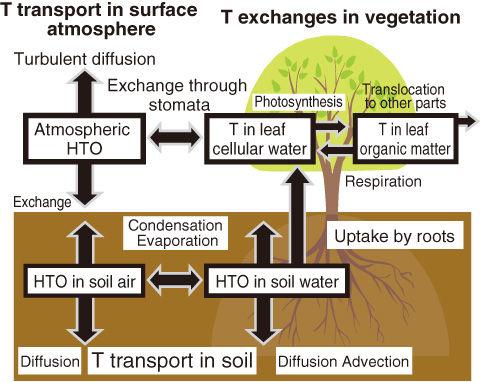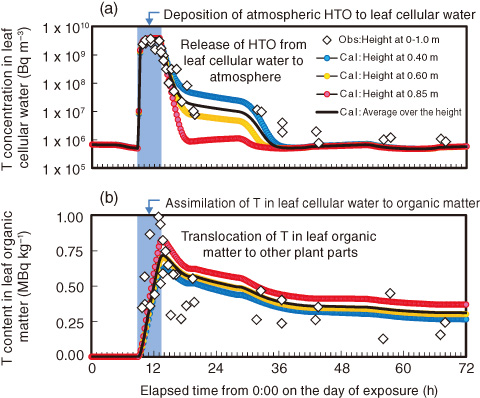
Fig.8-21 T transports and exchanges considered in the developed model

Fig.8-22 Reconstruction simulation of experiment in which grape plants were exposed to atmospheric HTO vapor
Tritium (3H, T) and radiocarbon (14C) are important radionuclides in the assessment of the radiological impact to the public of nuclear industries because of the long half-lives of T (12 years) and 14C (5730 years) and the biological importance of hydrogen and carbon in all life forms. T and 14C are discharged through the operation of nuclear power plants and fuel reprocessing plants; in the natural environment, T and 14C exist mainly in the form of tritiated water (HTO) and 14CO2, respectively. Thus, the discharged T and 14C are soon incorporated into the water and C cycles in the surrounding environment and are assimilated to vegetation as organic matter. The assimilated T and 14C eventually deliver a dose to the public through ingestion pathways; therefore, the transfer of T and 14C in land surface ecosystems should be precisely predicted to assess the dose due to nuclear facilities. However, models that dynamically consider the water and CO2 cycles and the resultant T and 14C transfer within a land surface ecosystem have not been developed; thus, assessments of the T and 14C-derived dose have contained a range of uncertainties.
We developed a model that predicts the transfer of T and 14C in a land surface ecosystem in detail. The dynamics of T (Fig.8-21) and 14C in the surface ecosystem are modeled, and the modeled T and 14C dynamics are incorporated into a land-surface water and CO2 transport model (SOLVEG-II, developed by the Japan Atomic Energy Agency). The developed model successfully predicted the accumulation of T (Fig.8-22) and 14C in leaves on plants exposed to HTO or 14CO2.
For a comprehensive understanding of the land surface T and 14C cycle, we then performed a range of numerical experiments using the model. The results demonstrated that during atmospheric T deposition to the soil, the loadings of HTO to the leaf cellular water due to root uptake of soil HTO significantly control the T concentration in the leaf cellular water, and hence the T content in leaf organic matter. Our results also quantified the increase in the 14C content of vegetation due to below-ground 14CO2 production caused by decomposition of 14C-containing soil organic matter originating from 14C-containing plant litter. Clearly, the model can be used to clarify the role or importance of each elemental process in the entire land surface T and 14C cycle; this useful information cannot be obtained from field observations or laboratory experiments.
As a more practical application of the model, we are now investigating the transfer of T and 14CO2 discharged at a nuclear facility over the surrounding land surface ecosystems through a simulation coupling the developed model and an atmospheric dispersion model.